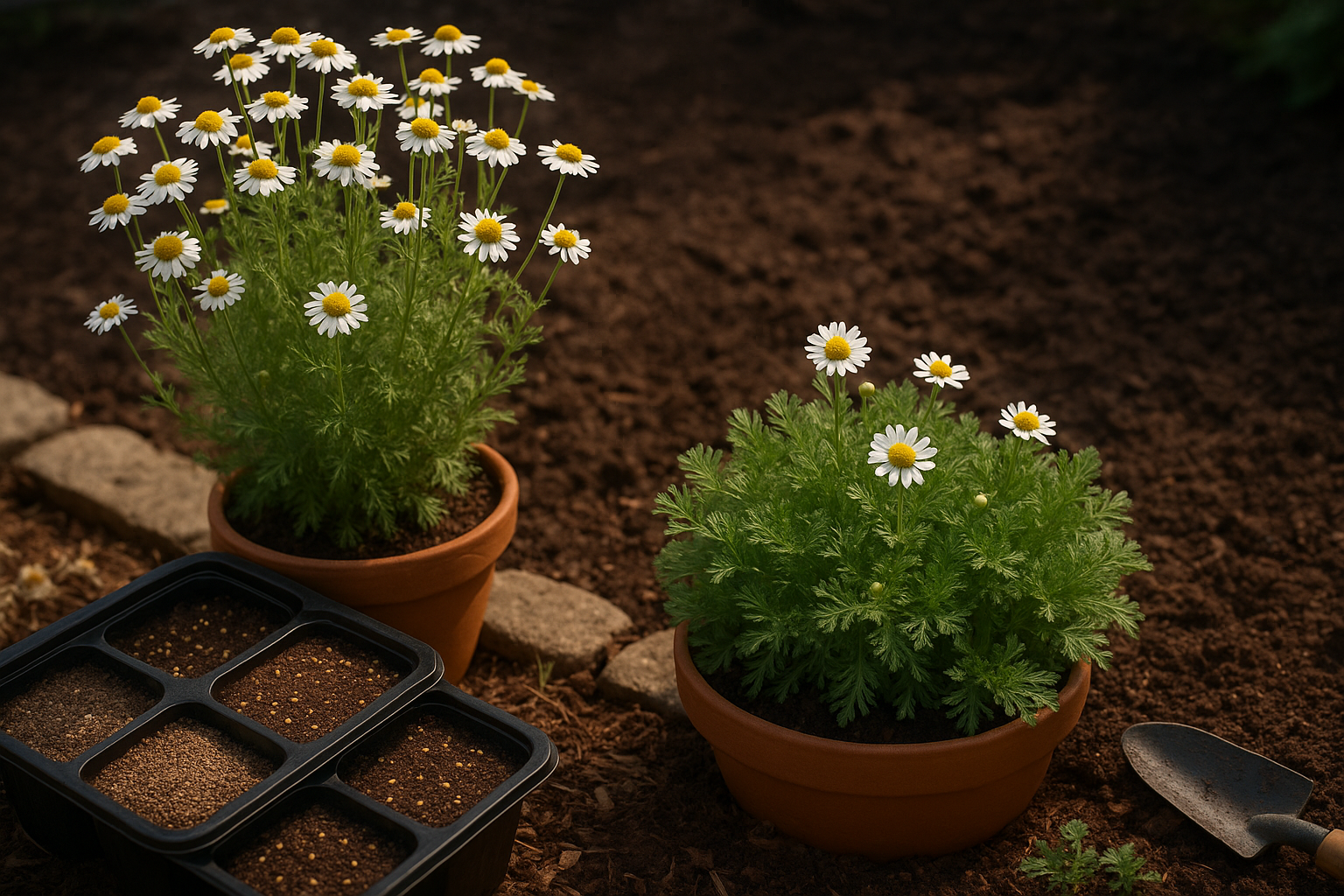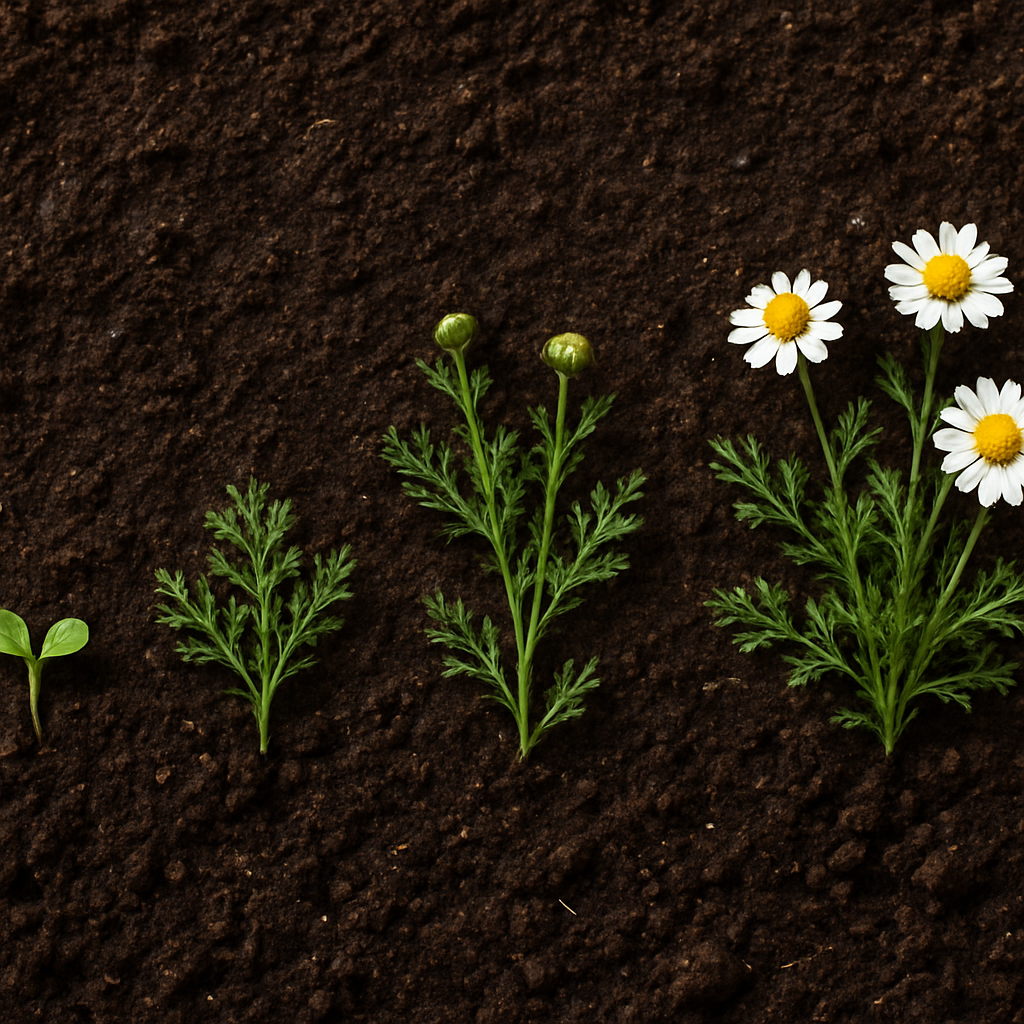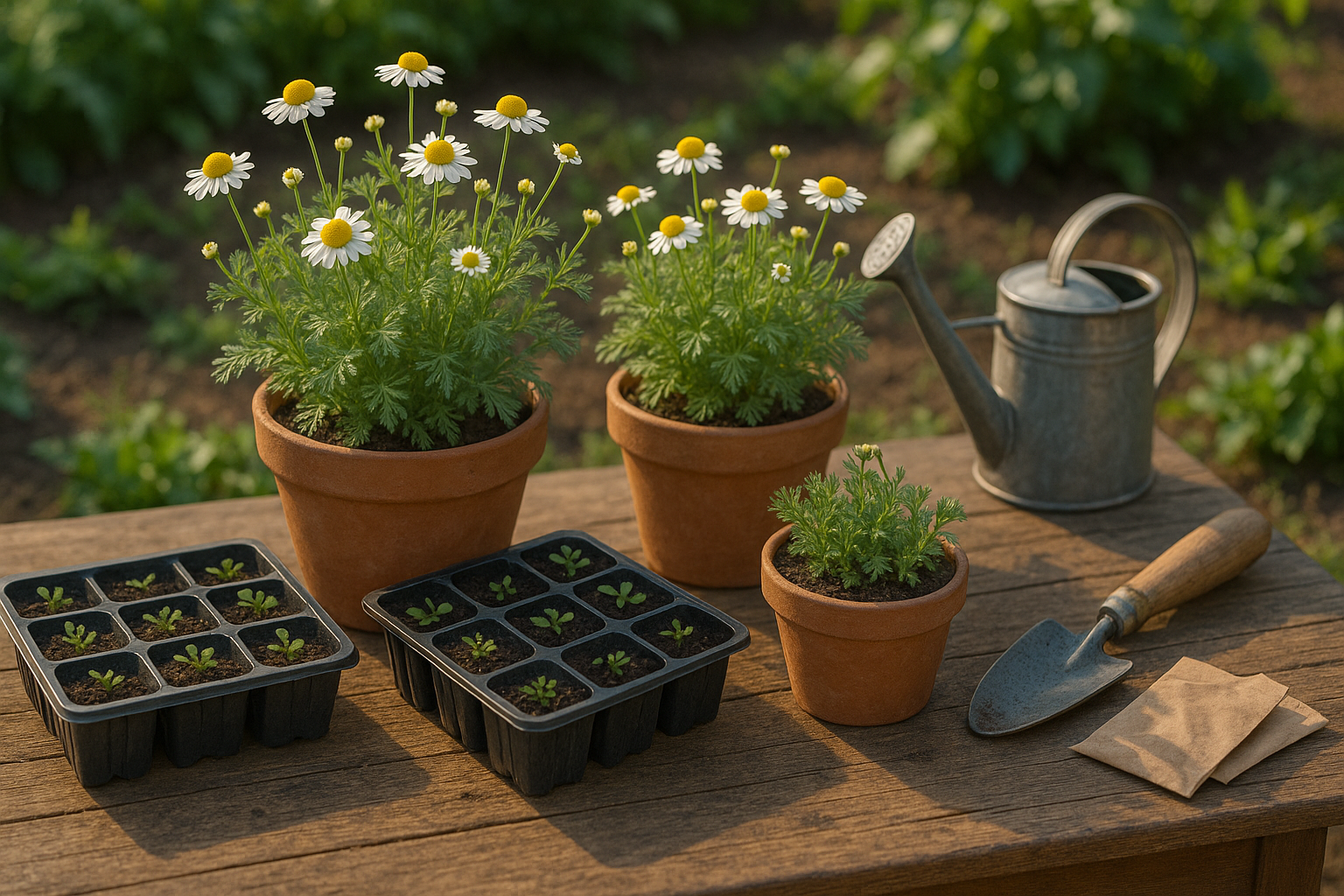Introduction
If you’ve ever sipped a calming cup of herbal tea, chances are you’ve tasted chamomile—one of the world’s most beloved and versatile plants. Renowned not only for its soothing qualities in teas, but also prized for medicinal remedies and its charming, daisy-like blooms that elevate any garden, chamomile holds a special spot in both kitchens and landscapes.
When thinking about growing your own, a common question arises: What is the typical chamomile growth timeline, and how long does chamomile actually take to flourish from seed to blossoming flower? The answer isn’t as straightforward as you might expect. The growth speed of chamomile varies depending on several factors, such as whether you’re cultivating Roman or German chamomile, your climate, soil conditions, and how much attention you give your plants.
Whether you’re sowing chamomile for a homemade tea stash or to create a pollinator-friendly garden bed, understanding these influences can make all the difference. In this article, we’ll walk you through the complete chamomile growth timeline, key differences between popular varieties, real-world tips for speeding up growth, and how to troubleshoot setbacks. Get ready to grow this gentle herb with confidence, from seedling to harvest!
Chamomile Varieties and Their Growth Rates

Choosing between German and Roman chamomile can make a noticeable difference in your gardening experience, especially when timing your harvest. German chamomile (Matricaria chamomilla) is an annual, completing its life cycle in one season. It’s known for its upright growth habit and abundant, daisy-like blooms. After sowing seeds, German chamomile typically germinates in about 7 to 14 days, with blossoms appearing around 6 to 10 weeks later under ideal conditions—making it a quick-sprouting option for gardeners aiming for an early tea harvest.
In contrast, Roman chamomile (Chamaemelum nobile) is a perennial with a low, spreading growth pattern that forms a mat of fragrant foliage while producing fewer but larger flower heads. Roman chamomile generally takes longer to establish and flower, often requiring an entire growing season before a strong harvest, especially when grown from seed. Some cultivars like ‘Treneague’ Roman chamomile are known for dense, ground-covering foliage but rarely flower, making them ideal if you prefer a lush look rather than blooms for tea.
Recognizing which chamomile variety you want to grow is crucial. German chamomile is perfect for those seeking a rapid bloom cycle, while Roman chamomile suits gardeners aiming for a long-term, perennial patch. Planning with the right variety in mind helps set realistic expectations for harvest timelines and allows you to tailor your care and planting schedules—whether seed-starting, transplanting, or dividing—around your garden’s seasonal rhythm. Understanding the growth habits and speed also prevents disappointment or unnecessary work, especially if you want a steady supply of blooms for drying or fresh use.
Seed Starting and Germination
Starting seeds is a rewarding way to get a head start on your garden, but timing and conditions are key for success. Generally, many gardeners begin sowing seeds indoors 6-8 weeks before the last expected frost for warm-season crops like tomatoes, peppers, and eggplants, while cool-season vegetables such as lettuce, broccoli, and kale can often be started outdoors or indoors just 2-4 weeks ahead of planting time.
To determine when to start, check your local frost date and count backward the number of weeks listed on the seed packet; this gives you a solid timeline. For germination, seeds need a consistently warm environment—most vegetables sprout best at soil temperatures between 65°F and 75°F (18°C–24°C).
Using seed starting trays filled with a sterile, well-draining seed starting mix helps prevent disease and gives fragile roots the best chance to grow. Providing bottom warmth with a seedling heat mat can dramatically speed up germination, especially in cooler homes.
Once planted, light is crucial: place trays in a sunny, south-facing window or use fluorescent or LED grow lights positioned just a few inches above the seedlings for 14-16 hours per day. Adequate light prevents leggy growth and supports healthy, sturdy plants.
Depending on the variety and conditions, most seeds germinate within 3 to 14 days, but some like peppers or parsley may take up to three weeks. To boost your germination rates, keep the soil evenly moist (but not soaked), and cover trays with a humidity dome or plastic wrap until sprouts emerge. Also, avoid using garden soil, which can harbor pathogens and impede tiny seedlings.
As soon as you see green shoots, remove covers and gradually increase air circulation. With attention to timing, warmth, light, and cleanliness, you’ll see strong, healthy seedlings ready to transplant into your garden when the time is right.
Growth Stages of Chamomile (From Seedling to Flowering)

Chamomile’s journey from a tiny seed to a fragrant, blooming flower unfolds through several distinct stages, each with its own appearance and pace. After sowing, seedlings emerge in about 7-10 days. At this tender seedling stage, chamomile has small, delicate leaves and stands only a few inches tall. This is when the plant is most vulnerable, needing consistently moist (but not soggy) soil and gentle sunlight.
After two to three weeks, chamomile enters the vegetative stage, rapidly producing feathery, finely divided leaves and developing a sturdier stem. During this time, the plants start to fill out, reaching 6-12 inches in height—sometimes a bit more, depending on whether you’re growing German chamomile (Matricaria chamomilla, an annual) or Roman chamomile (Chamaemelum nobile, a perennial). German chamomile tends to grow taller and faster, completing its lifecycle in a single season, while Roman chamomile spreads lower and tends to creep along the ground, returning each year if overwintered well.
About four to six weeks after sowing, healthy chamomile plants enter the budding stage. You’ll notice small, rounded green buds forming at the tips of stems—an exciting sign that flowering is near. The plant’s aroma also intensifies as oils concentrate in the buds.
Flowering follows shortly after budding—typically within 7-10 weeks of planting. Blossoms appear as cheerful white daisy-like flowers with yellow centers, and the plant reaches its mature height. German chamomile often produces dozens of upright flowering stems per plant, while Roman chamomile may produce fewer but larger blooms on lower branches.
Both varieties thrive in full sun and well-drained soil. However, Roman chamomile is notably hardier, persisting in the garden year after year and often acting as a ground cover.
For harvesting, pick blooms at their peak—usually when petals are fully open and still perky. Harvest more frequently if you want a constant flush of flowers, especially with fast-growing annual types. By keeping an eye on leaf shape, plant height, and budding activity, you can easily track your chamomile’s lifecycle and provide the best care for a bountiful harvest, whether growing annual or perennial varieties.
Environmental and Care Factors that Affect Growth Speed
Several key environmental and care factors play a crucial role in how quickly your plants grow, whether you’re tending a garden bed or caring for container plants on a balcony. Light is often the biggest driver of growth speed—most plants require at least six hours of direct sunlight per day. If you’re growing indoors or in a shady spot, consider supplemental grow lights to ensure your plants get enough energy for photosynthesis.
Temperature is another major influence; many vegetables and flowers thrive between 65–75°F. If temperatures dip too low or soar too high, growth can stall. Protect plants from unexpected frosts with covers, or provide shade and extra water during heatwaves.
Soil quality matters just as much—rich, well-draining earth allows roots to spread and access nutrients. Mix compost or organic matter into garden beds, and use high-quality potting mix for containers to maximize soil fertility and drainage.
Watering is often misunderstood; too much leads to root rot, too little causes wilting. Always check soil moisture before watering, and ensure containers have drainage holes.
Fertilization also affects growth: overfeeding can burn roots, but underfeeding causes deficiencies. Follow label directions, and choose slow-release or balanced fertilizers made for your specific plant type.
Common Mistakes That Slow Growth
Common mistakes that slow growth include using the wrong soil, crowding plants, and inconsistent watering. For example, planting vegetables too close together limits airflow and sunlight, causing stunted growth and increased disease risk.
Outdoors, space seeds or seedlings according to package recommendations, and thin out crowded sprouts early. In containers, pick the right-sized pot and avoid reusing old soil, which may harbor pests or lack nutrients.
Incorporate mulch outdoors to retain moisture and suppress weeds.
For both gardens and pots, regular monitoring is key—catching pests, diseases, or signs of over- or under-watering early can save your plants and speed up their growth. By mastering these basics and tailoring care to your specific environment, you’ll give your plants the best shot at vigorous, healthy development all season long.
When and How to Harvest Chamomile
Chamomile is ready to harvest when its daisy-like flowers are fully open, with white petals that are flat or slightly reflexed and yellow centers that are plump and fragrant. The best time to pick is usually early in the morning after the dew has dried but before the midday sun becomes too strong. Most varieties reach this stage about 8 to 10 weeks after planting seeds, depending on sunlight and weather. If you direct seed in spring, expect your first picking by early to mid-summer.
For the best quality, use your fingers or small scissors to gently pinch or snip the flower heads just above the foliage, being careful not to damage stems or disturb developing buds. Harvesting every few days encourages more blooms throughout the season.
After picking, spread the flowers in a single layer on a clean screen or paper towel in a warm, dark, well-ventilated area. Turn them occasionally until they are crisp and dry, which usually takes about a week. Once thoroughly dried, store the flowers in an airtight glass container away from heat and sunlight to preserve their delicate scent and health benefits.
Remember: only harvest the flowers, not the stems or leaves, to ensure the fullest flavor in teas and remedies. Following these simple steps will help you enjoy a continuous supply of high-quality chamomile throughout the growing season and beyond.
Common Challenges and Troubleshooting Growth Delays
Growth delays are a common headache for gardeners, with issues like poor germination, pesky insects, diseases, and unexpected weather all threatening thriving plants. If seeds aren’t sprouting, first check that you’re using fresh seeds and planting them at the right depth—old or improperly stored seeds often have lower viability.
Overwatering or using heavy soil can slow down growth by reducing oxygen to developing roots, so be sure your soil drains well and you’re not saturating young seedlings. Pests such as aphids and caterpillars can stunt growth, so inspect leaves regularly and use gentle options like hand-picking bugs or spraying with a mild soapy water solution, which won’t harm plants or beneficial insects.
Diseases like powdery mildew or damping-off thrive in crowded, humid spots; space out your plants and avoid overhead watering to minimize risk. Weather extremes, such as sudden cold snaps or scorching heat, can also impact growth—using row covers or mulch can shield plants from the worst effects.
If you’ve tried these troubleshooting tips and still struggle, consider reaching out to your local extension office or gardening group. They offer tailored advice for your region and can help diagnose tricky problems. Online gardening forums and apps like GardenAnswers or iNaturalist are also great for quick feedback and solutions from experienced growers.
By tackling issues early and using gentle, practical fixes, most growth setbacks can be turned around without harming your plants.
Conclusion & Quick Reference Timeline
Growing chamomile from seed to the first harvest typically takes about 8 to 10 weeks, making it a fast and rewarding addition to your herb garden. Here’s a quick reference:
- Weeks 1-2: Sow seeds and watch for sprouting.
- Weeks 3-4: Seedlings develop true leaves.
- Weeks 5-6: Plants begin to bush out.
- Weeks 7-8: Buds start to appear.
- Weeks 8-10: Flowers are ready for picking.
With consistent watering, plenty of sunlight, and occasional pinching to encourage bushiness, you’ll enjoy delicate chamomile blooms in no time. Even new gardeners find chamomile to be a rewarding herb that thrives quickly and beautifully with just basic care.
